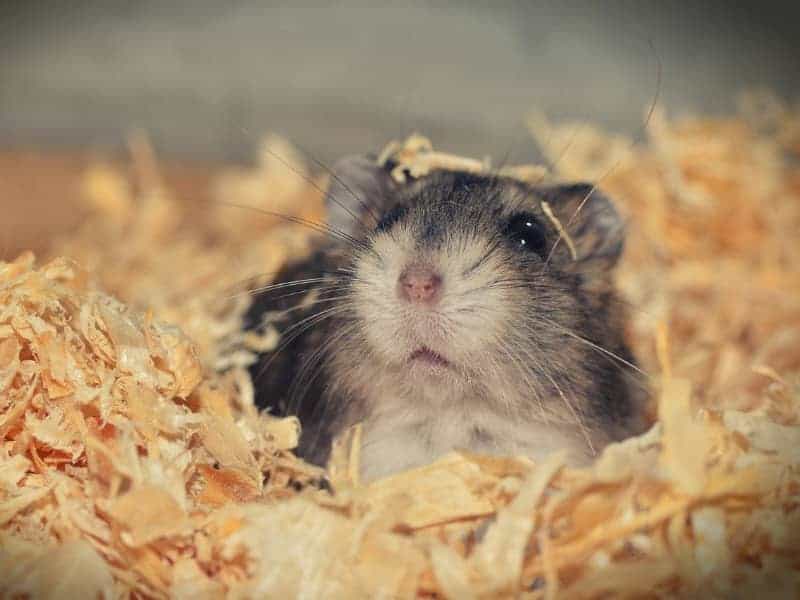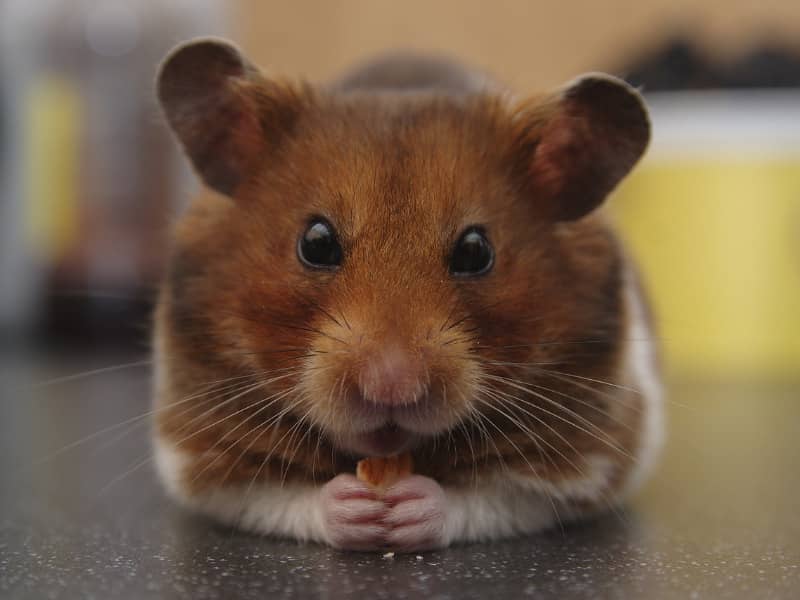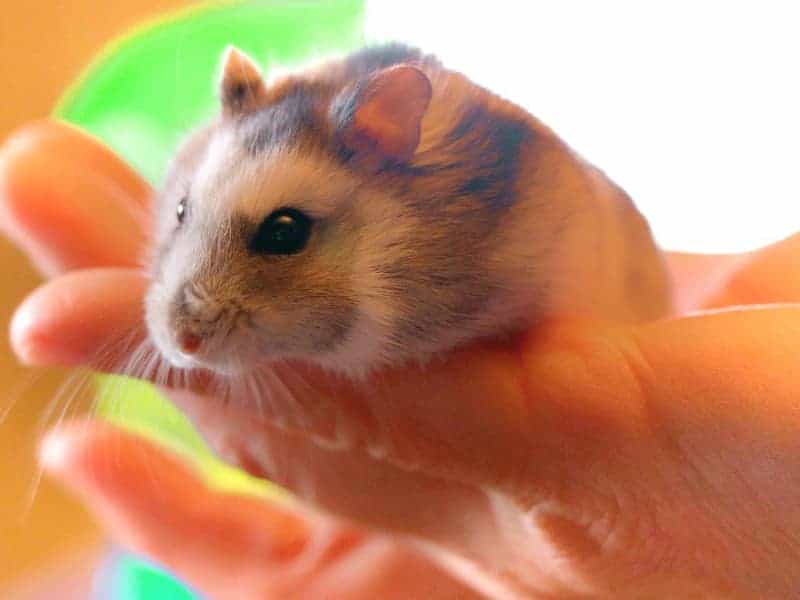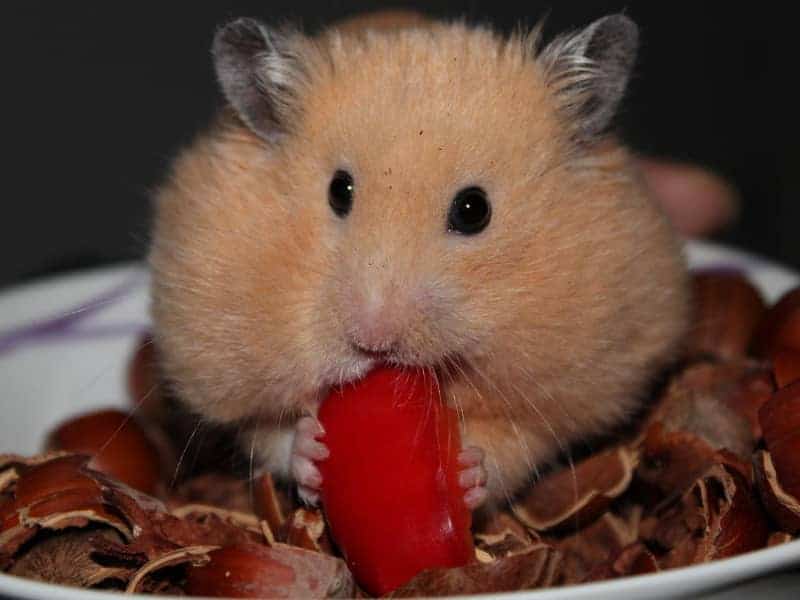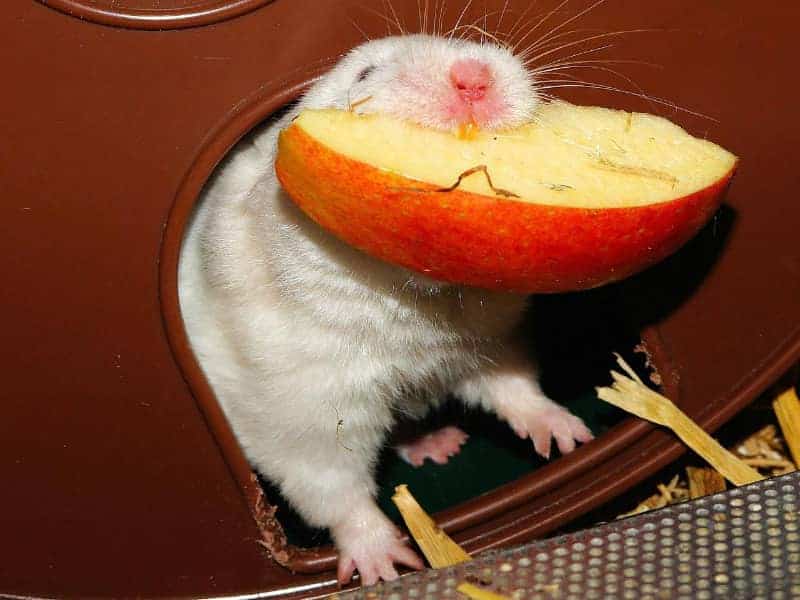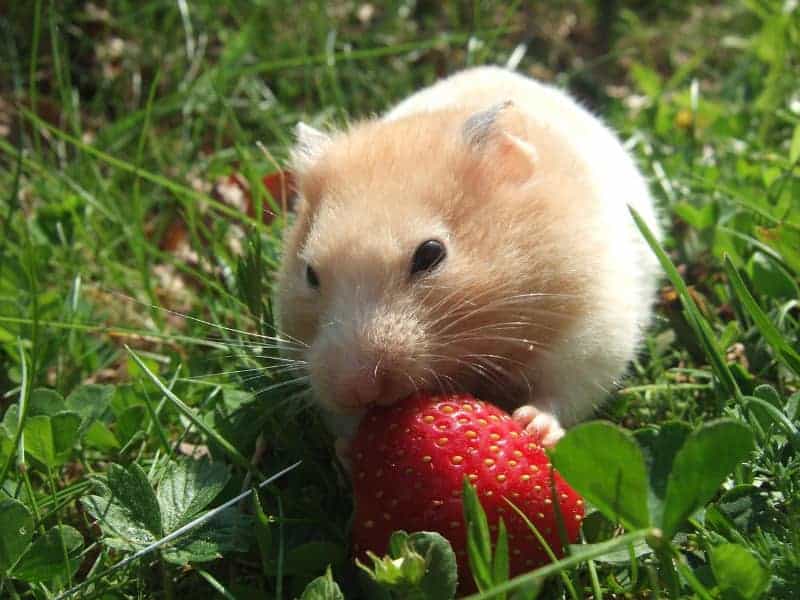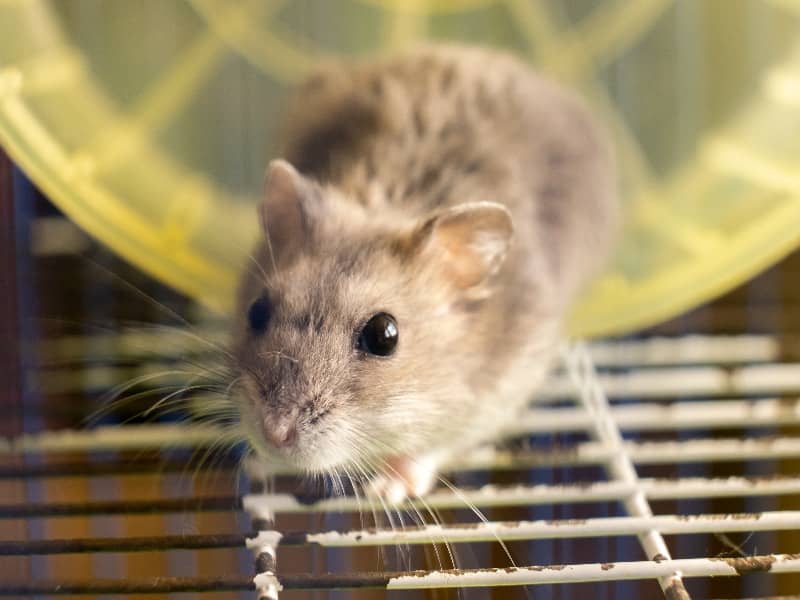
Dwarf hamster
Who does not know them, the small, nimble balls of happiness called dwarf hamsters? They are not only adorable, but also fascinating animals that are becoming increasingly popular in pet keeping. In this blog post, you'll learn everything you need to know about dwarf hamsters, from acquisition to daily care. So that you can offer your little friend a happy and healthy life, it is essential to inform yourself in advance in detail.
Why dwarf hamsters are popular pets
The popularity of dwarf hamsters is not difficult to understand. These little creatures are just too adorable! But there's more to them than just their cute, cuddly faces. Dwarf hamsters are relatively easy to care for and don't take up much space, making them ideal for apartments or small homes.
Moreover, they are also nocturnal, which means that they are mainly active when most people are at home and can spend time with them. Their natural play instinct and curiosity make them entertaining objects to watch. With a little patience and the right approach, you can even form quite a close bond with them.
Last but not least, dwarf hamsters are also relatively inexpensive to purchase and keep compared to other pets. This makes them a wonderful choice for pet newbies and families on a budget.
Why it is important to learn about dwarf hamsters
Anyone who acquires a pet has a great responsibility. This is especially true for animals like dwarf hamsters, which have special needs and care requirements. It's not enough to simply put them in a cage and feed them. Dwarf hamsters are more complex creatures than you might think at first glance.
Thorough research and preparation can make the difference between a stressful or happy time with your new pet. It also helps to avoid unnecessary mistakes and health problems. After all, the goal of any pet ownership is to make the pet's life as comfortable and healthy as possible.
Types dwarf hamsters
Dwarf hamsters come in a variety of species that can differ in appearance, character and needs. In this section, we will introduce you to some of the most popular dwarf hamster species so you can get a better idea of which little friend will suit you best.
Russian dwarf hamster
The Russian Dwarf Hamster, also known as the Dzungarian Dwarf Hamster, is one of the best known species and is often offered in pet shops. He is relatively hand-tame and is therefore particularly suitable for beginners.
Its coat is mostly gray to bluish and it has a characteristic dark stripe along its back. Life expectancy is about two to three years. They tend to be solitary animals, but can also be kept in groups if they live together from an early age.
It is important to note that this species has a moderate activity phase and is most active at dusk. This should be considered when planning employment opportunities and feeding schedule.
Campbell dwarf hamster
The Campbell Dwarf Hamster is very similar to the Russian Dwarf Hamster, but differs in a few ways. Its fur has more brown tones and the life expectancy is slightly higher, at about three to four years.
It is known for its high activity and curiosity, which makes it an entertaining pet. However, the Campbell Dwarf Hamster is less hand-tame than its Russian relative and is therefore more suitable for experienced owners who can invest a lot of time in socialization and employment.
Roborowski dwarf hamster
The Roborowski Dwarf Hamster is the smallest of the dwarf hamsters and also the nimblest. With a life expectancy of three to three and a half years, it is a comparatively long-lived pet.
He is extremely active and therefore more suitable for experienced owners who can offer him sufficient exercise and occupation. Because he is very fast, capturing him for hand taming is often a challenge. This should be considered at the time of acquisition.
Chinese dwarf hamster
The Chinese dwarf hamster is a rather rare species and not so easy to find in pet stores. It has a special appearance, with more elongated body and a clearly visible tail. Its life expectancy is about two to three years.
This dwarf hamster is usually quite shy and needs a lot of time and patience to gain trust. So if you are looking for a challenge and a special kind of dwarf hamster, the Chinese dwarf hamster could be just right for you.
| Dwarf hamster species | Size (cm) | Life expectancy (years) | Character traits |
| Campbell Dwarf Hamster | 8-10 | 1,5-2 | Sociable, curious |
| Roborowski dwarf hamster | 4-5 | 3-3,5 | Fast, shy |
| Dsungarian dwarf hamster | 8-11 | 1,5-2 | Friendly, trusting |
| Chinese dwarf hamster | 10-12 | 2-3 | Quiet, rather reserved |
Acquisition and initial equipment
Getting a dwarf hamster is an exciting moment, but it also comes with some important decisions. There is a whole list of things you should prepare and consider before your new little friend moves in with you. In this section, we'll cover choosing the right cage, basic equipment, and the initial settling-in period.
Choosing the right cage
A dwarf hamster needs a suitable home where it feels safe and comfortable. The cage should be large enough to provide enough space for exercise, sleep and various activities. As a minimum size, a floor space of 100 x 50 cm is often recommended.
In pet stores there is a wide range of cages, from lattice cages to aquariums or terrariums. Each type has its own advantages and disadvantages. While mesh cages allow good air circulation, glass containers offer a better view of the hamster.
Also note that the cage should have as flat a bedding area as possible and one to two levels for play and exploration. In addition, an easily accessible drinking bottle and feeding area are essential.
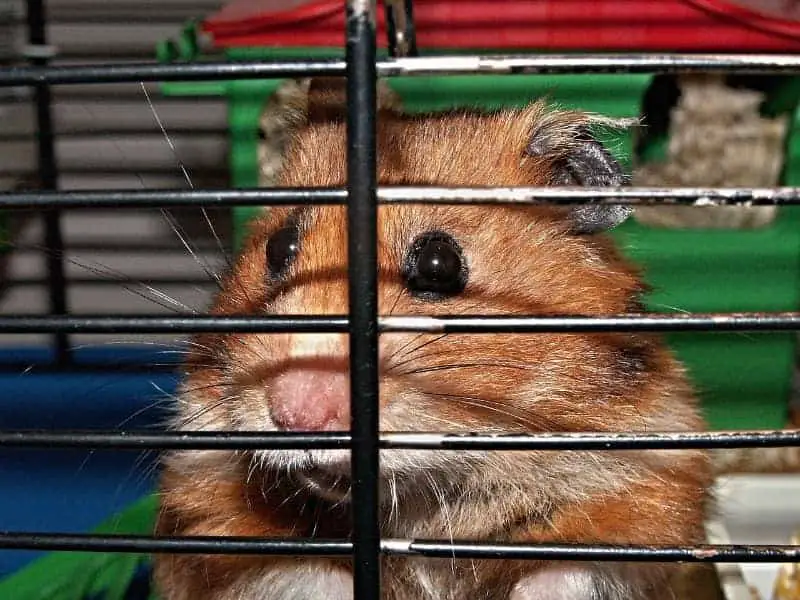
What is needed: Litter, food, water dispenser
After you have found the right cage, you will of course need the appropriate basic equipment. This starts with the bedding, which should consist of absorbent and non-toxic material such as hemp or wood chips.
When feeding, you should make sure to choose a balanced mixture that contains all the necessary nutrients. There are special dwarf hamster foods that usually contain all the important ingredients such as grains, vegetables and proteins.
A water dispenser or water bottle is also essential. These should be placed so that the hamster has access to fresh water at all times without getting the bedding wet.
First acclimatization phase
The first days and weeks in the new home are a time for your dwarf hamster to get to know and get used to. In this phase it is especially important to give the animal enough space and time to explore its new environment.
It is advisable to leave the hamster alone for the first few days and only enter the cage for the most necessary activities such as feeding and cleaning. With time, you can begin to carefully establish contact, for example, by offering treats from your hand or petting carefully.
Note that each hamster is an individual and requires its own time to acclimate. Some animals are quicker to trust, while others require more time and patience.
Nutrition and feeding
A healthy dwarf hamster needs a balanced diet that covers all essential nutrients. Incorrect feeding can lead to health problems such as obesity, deficiencies or digestive problems. In this section, we highlight the different aspects of dwarf hamster nutrition and feeding so that your little friend can live a long and healthy life.
Basic feed ingredients
The basis of the diet for a dwarf hamster should be a special hamster food, which is available in the pet store. These food mixtures are usually designed to contain all the necessary nutrients such as proteins, fats, carbohydrates and vitamins.
Make sure that the food does not contain added sugar or artificial colors, as these can be harmful to the hamster. Also, the food should contain different components such as seeds, nuts and dried vegetables to provide variety.
Fresh food and snacks
In addition to dry food, the dwarf hamster should also be provided with fresh food on a regular basis. Vegetables such as cucumbers, carrots or zucchini are suitable options. Fruit should only be given in small quantities, as it contains a lot of sugar.
Treats such as mealworms or special hamster snacks can serve as rewards, but should only be fed in moderation to avoid obesity.
Drinking water and moisture supply
Fresh water is an absolute must for any hamster and should always be available. A water dispenser or water bottle is best to keep the water clean.
In addition to the water bottle, water-rich vegetables such as cucumbers or watermelon can also help hydrate.
Feeding times and amounts
Dwarf hamsters are primarily crepuscular and nocturnal, so it is recommended that food be provided during the evening hours. The exact amount will vary depending on the hamster's age, health and activity level, but a rule of thumb is to provide about one tablespoon of dry food per day.
An important point is that the food should always be fresh. Old or moldy food must be removed immediately to avoid health risks.
Dwarf hamster - health and care
The health of your dwarf hamster is a critical factor in its well-being and quality of life. In addition to proper nutrition and habitat, regular health checks and good grooming practices are important. In this section, we'll cover common diseases and their symptoms, explain when a visit to the vet is advisable, and provide general care tips.
Common diseases and symptoms
Dwarf hamsters can unfortunately get sick, and it is important to recognize the signs early. Common illnesses include respiratory infections, digestive problems and skin conditions. Symptoms may include:
- Apathy or apathy
- Changed feeding habits
- Conspicuous breathing or sneezing
- Sticky or watery eye
If you notice such symptoms in your hamster, it is advisable to consult a veterinarian.
When a visit to the vet is necessary
A visit to the vet is urgently necessary if you notice clear signs of a disease in your dwarf hamster. These include, in addition to the above symptoms, sudden weight loss, lethargy or noticeable changes in behavior. In such cases you should not hesitate and consult a veterinarian immediately.
General care tips
Good grooming is critical to the health of your dwarf hamster. This includes:
- Regular cleaning of the cage to prevent the accumulation of bacteria and mold.
- Make sure the hamster always has fresh water and food.
- Check the hamster regularly for abnormalities such as lumps, sores or changes in behavior.
Conclusion: Dwarf hamster
Dwarf hamsters are not only adorable pets, but also fascinating creatures with their own needs and character traits. However, keeping them requires careful planning and care. From choosing the right cage and initial equipment to special dietary requirements, behavioral observations and health checks, there are many aspects to consider.
Before you decide to purchase a dwarf hamster, it is important to inform yourself in detail about their needs. Pay particular attention to the selection of a suitable cage, the necessary initial equipment and the first acclimatization phase. As for the diet, it should be balanced and adapted to the specific needs of the hamster. When observing and interacting, it is advisable to understand the characteristic behavior patterns and social needs of your little friend. Finally, the health and care of the animal is also of great importance.
With proper preparation and continued care, you can ensure that your dwarf hamster lives a long, healthy and happy life. A dwarf hamster can be a wonderful addition to your life if you are willing to give it the time, love and care it deserves.
Author

-
Garden animal - A life with nature
Welcome to my animal blog! My name is Dirk and I am happy to take you on my journey through the fascinating world of animals and gardening.
Born 54 years ago, I have had an insatiable curiosity for the animal world around me since childhood. Although I have moved professionally in other industries, my true passion has always been animals and nature. It is remarkable how a small garden has become such an important part of my life.
Many of my fondest memories are associated with the animals that share our home. Whether it's the curious squirrels that scurry across the trees in the morning, the colorful variety of birds that visit our feeders, or the busy bees and butterflies that pollinate our flowers, every moment with them is invaluable to me.
This blog is my contribution to share my experiences, discoveries and insights with like-minded people. Here I will share stories of unforgettable encounters with animals, give tips on gardening and creating wildlife-friendly habitats, and take you on my journeys through nature.
Thank you so much for being here!
Cordial,
Dirk aka garden animal
Last posts
- 27. February 2024PetsVeganes Hundefutter – Grün und Gesund?
- 18. January 2024ChickensOregano für Hühner
- November 27, 2023HamsterDiurnal hamsters
- November 24, 2023HamsterHamster hammock

